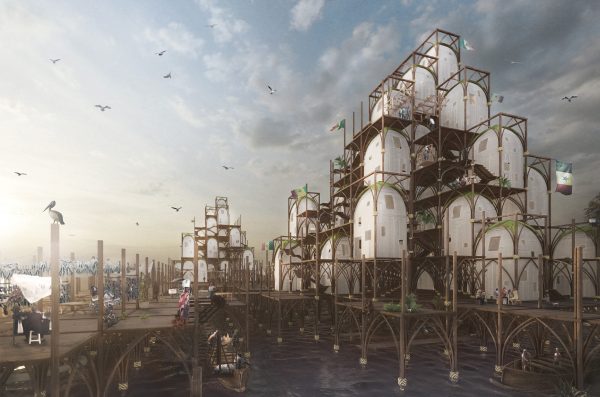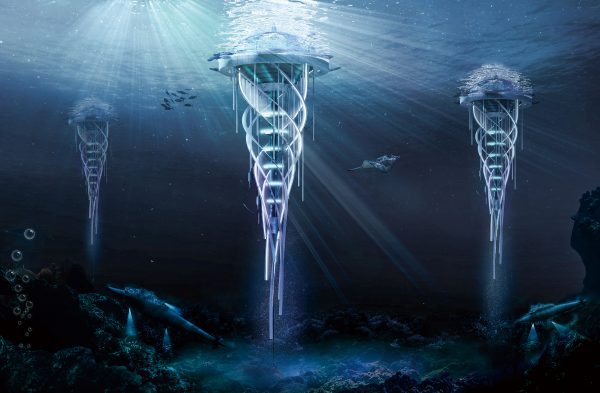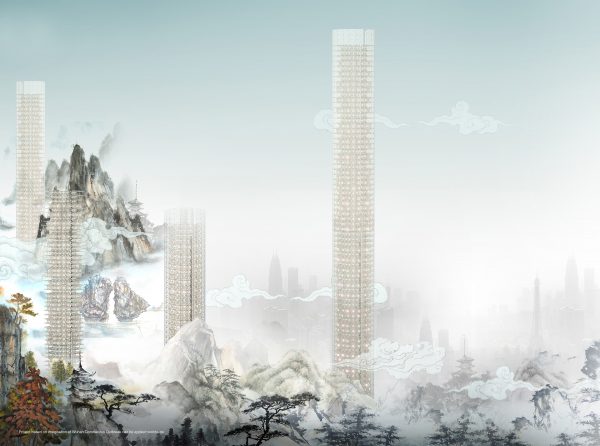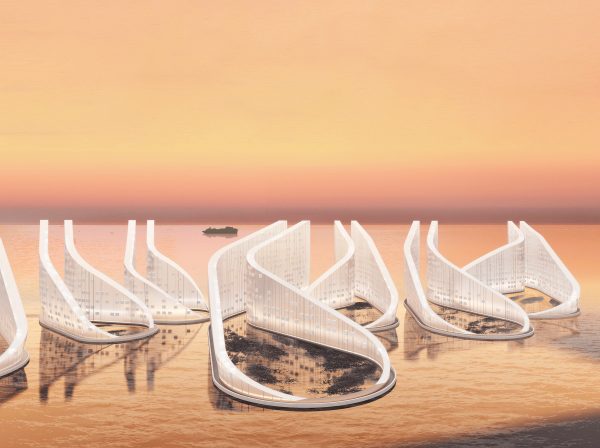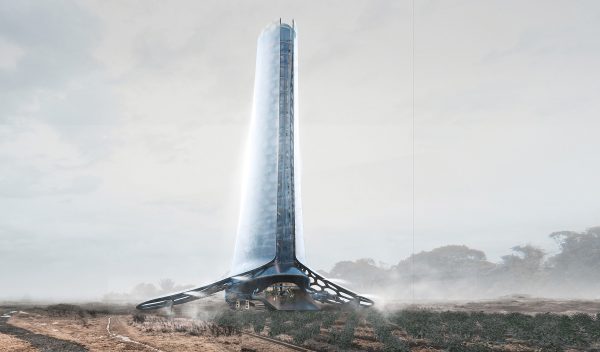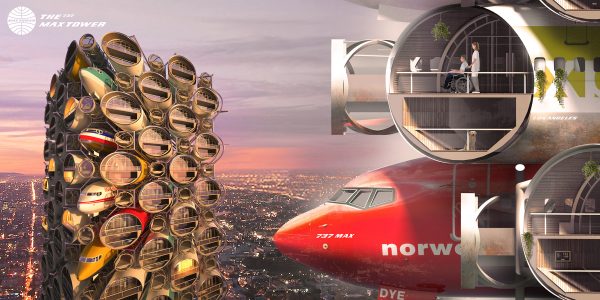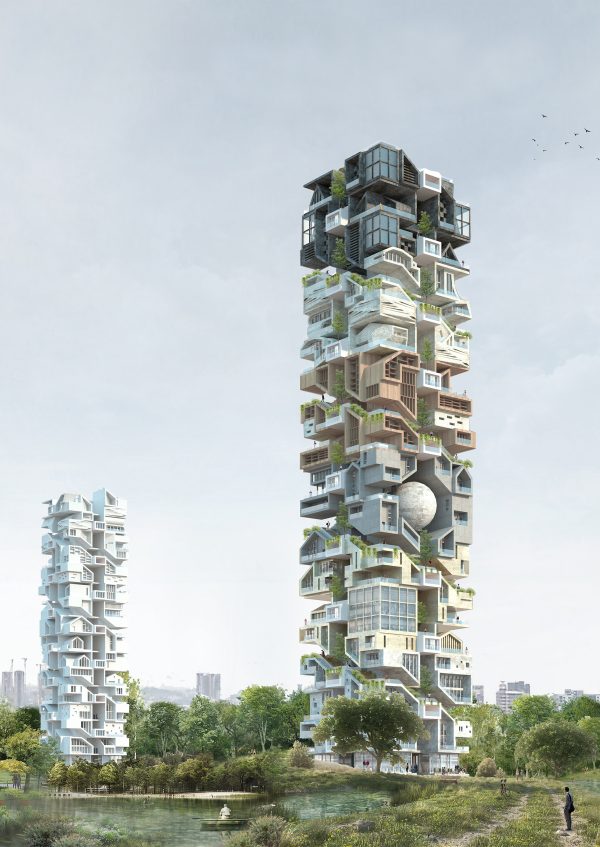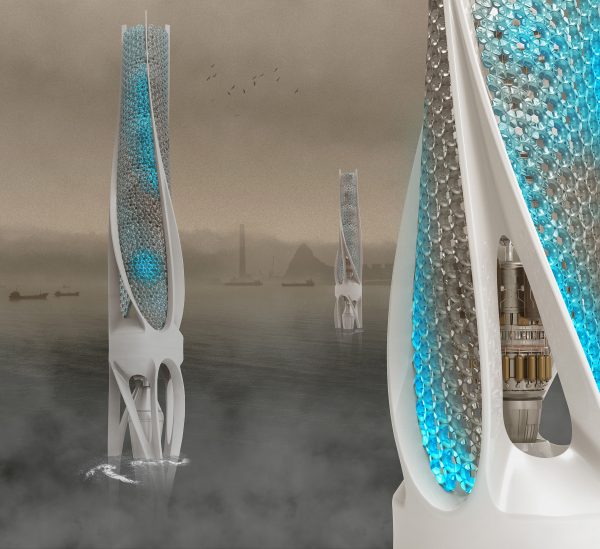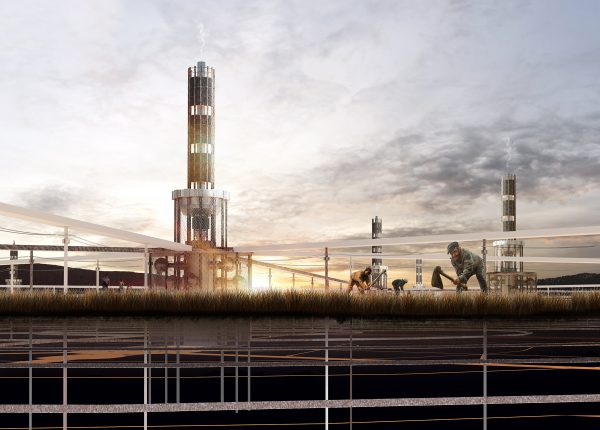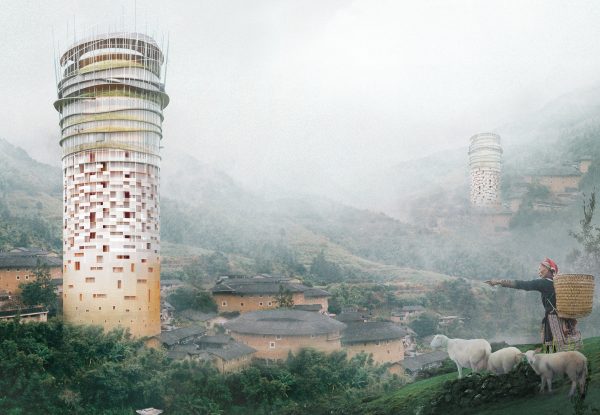Third Place
2020 Skyscraper Competition
Charles Tzu Wei Chiang, Alejandro Moreno Guerrero
Taiwan
St. Louis, Senegal, located in the northwest part of the country, near the mouth of The Senegal River, has been home to fishermen for generations. It is a hostile territory where there are constant confrontations with the neighboring countries regarding the established fishing boundaries and territories. In addition to the political and social problems, the region is affected by the rising sea level. Such natural phenomenon has forced the community to move inland, away from the shore.
This proposal is based on traditional pillar structures, which are used to prevent erosion. These structures will serve as a foundation for the new vertical housing units. The project is also inspired by Senegal’s traditional wooden architecture that uses a complex arch system with tensile structures. The system allows a high degree of adaptability and extendibility to create a new community by the sea challenging the rising sea level. Read the rest of this entry »

